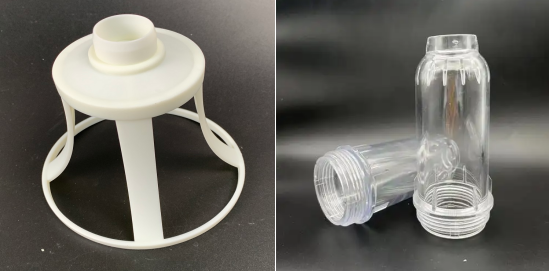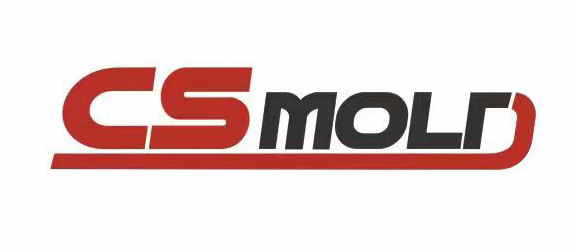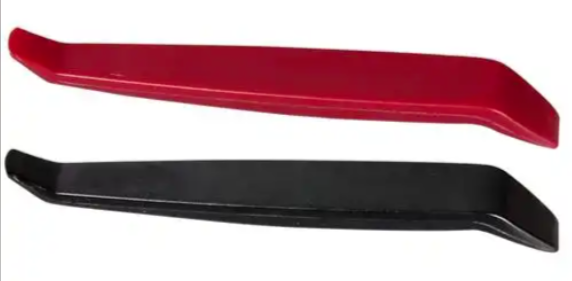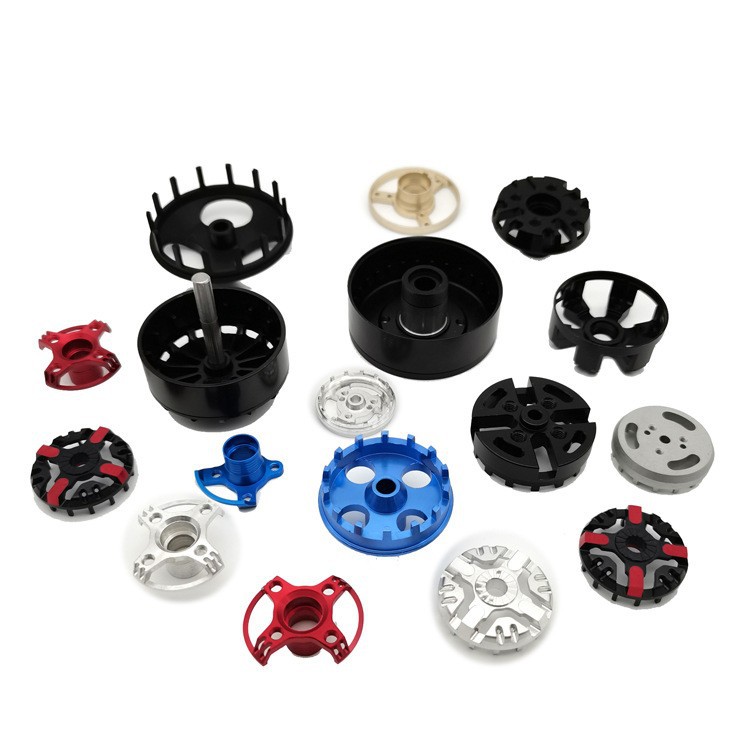
Both 3D printing and injection molding are commonly used processing technologies in the manufacturing industry. 3D printing is a fast and cost-effective option for situations where product designs need to be quickly functionally prototype. On the other hand, injecion molding focuses more on ensuring accuracy and strength on a large scale, making it an ideal choice for large-scale production. Both processes have their own unique advantages, and choosing 3D printing or injection molding depends on your specific project needs.
1.The core process differences between 3D printing and injection molding
1.1 3D printing builds parts layer by layer based on digital files. It is additive manufacturing – no excess material is wasted. 3D printing is a very advantageous choice when you need to produce complex parts in small batches. This technology works in a unique “layer-by-layer” way, which not only allows rapid prototyping, but also easily realizes complex structures that are difficult to complete with traditional processes, and the process flow is also quite clear.
1.2 Injection molding molten material into a mold. It is a subtractive manufacturing that requires a mold, but can achieve mass production. When you need to mass produce standardized plastic parts, injection molding is undoubtedly the most efficient and economical choice. This technology can achieve consistent production of batch parts by virtue of the synergy between mold and melt injection. The process is mature and stable, which can ensure mass production while also ensuring good precision and surface effects of parts.
Both can produce precise parts, but their advantages vary depending on the scale and needs of the project.
2.Key Parameter Comparison
Use this table to quickly assess which process suits your needs
Factor | 3D Printing | Injection Molding |
Ideal Volume | 1-100 units | 1,000+ units |
Setup Cost | Low (no molds) | High (mold creation) |
Per-Unit Cost | Higher | Lower at scale |
Material Range | Plastics, resins, some metals | Wide plastics, composites |
Lead Time (First Part) | 2-4 days | 2-4 weeks (mold + first run) |
Tolerance | ±0.1mm (FDM), ±0.05mm (SLA) | ±0.02mm (after mold tuning) |
2.1 Case Study 1: 3D Printing for Prototyping
A US tech startup needed 20 prototypes of a plastic sensor housing. Their design was still evolving—changes were likely after testing.
Details | Outcome |
Production Volume | 20 units |
Material | ABS-like resin |
Lead Time | 4 days |
Cost | $35 per unit |
Key Benefit | Modified design 3x without extra cost |
3D printing let them test 3 design versions in 2 weeks, accelerating their development timeline.
2.2 Case Study 2: Injection Molding for Mass Production
A European consumer goods company needed 10,000 plastic bottle caps. They contacted us and told us that the final design was done and consistency was critical for assembly. They hoped we could find a way to produce it for them.
Details | Outcome |
Production Volume | 10,000 units |
Material | Polypropylene |
Lead Time | 4 weeks (mold + production) |
Cost | $0.50 per unit |
Key Benefit | Uniformity across all units |
After a detailed analysis of the manufacturing feasibility, we recommended the injection molding process without hesitation, and obtained the customer’s approval after giving a dedicated quotation. This is the advantage of the injection molding process, which can reduce more costs for the customer’s project while ensuring large-scale mass production.
3.Material Performance
The choice and applicability of materials will also affect the choice of process to a certain extent. Different materials have their most suitable product range. We can also use the materials as a basis for judgment:
3D printing excels with complex geometries but has material limits:
Best for: PLA, PETG, and engineering resins (for prototypes).
Less ideal: High-temperature or chemical-resistant materials.
Injection molding handles diverse materials better:
Best for: Polypropylene, ABS, and glass-filled composites.
Ideal for: Parts needing durability or specific textures.
4.When to Choose 3D Printing
You need 1-100 parts quickly (3-7 day turnaround).
Peoject design has complex features (e.g., internal channels).
The anticipate design changes (no mold rework costs).
A robotics company approached us to use 3D printing to help them test 5 different gripper designs in one week, which was critical to their tight release schedule.We lived up to our customers’ expectations and successfully completed all test production within the specified time, winning valuable time for our customers.
5.When to Choose Injection Molding
You need 1,000+ identical parts.
Material strength or heat resistance is critical.
Long-term production (mold costs amortize over volume).
We once helped a medical device manufacturer convert 50,000 plastic housings to injection molding in our facility, reducing unit costs by 60%.
6.Hybrid Approaches
You may wonder, what if you need project parts within the quantity of 100-1000? Don’t worry, CS Molding can specify a unique production plan according to your needs. We can combine 3D printing with injection molding process:
Use 3D printing for initial testing and small batches.
Transition to injection molding once design locks.
A furniture company did this and approached us to validate the prototype at a lower cost before launching it into production. We advised him to do this and after final calculations, it saved 40% of the total cost compared to investing in molds up front.
7.Expert Recommendations
For prototypes: 3D printing avoids mold waste if designs might change.
The seasonal products: 3D printing prevents mold storage costs.
About year-round items: Injection molding saves money at scale.
Our engineers can assess your CAD files and recommend the optimal process—no obligation.
8. Choose your best partner – get one-stop processing services with CS Molding
We have 17 years of expertise in 3D printing and injection molding, we are able to handle any process. Our engineers not only execute orders, but also optimize your designs in terms of cost, speed, and performance, saving you time and resources from day one.
With a global supply chain and 24/7 project tracking, we ensure transparency and transparency every step of the way. Whether you need 10 prototypes or 10,000 production parts, we can seamlessly scale to match your timeline.
Not sure which process is right for your project? Please share your CAD files, production requirements, and material preferences. Our team will analyze your needs, provide a free feasibility report, and plan the most efficient path forward.
Ready to turn your ideas into physical parts? Contact us today by email or call our engineering team directly for a free quote.




